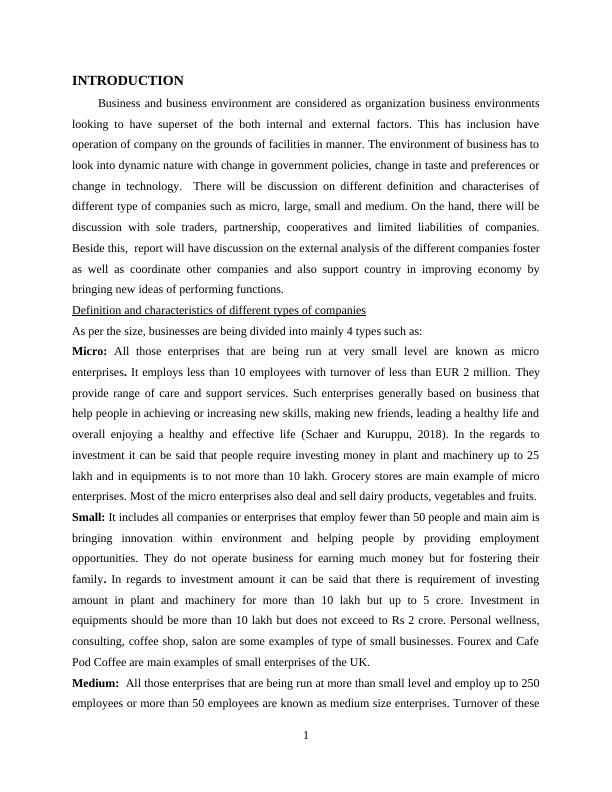Different Types of Companies and Organizational Structures
12 Pages2497 Words66 Views
Added on 2023-01-03
About This Document
This report discusses the definition and characteristics of different types of companies, including micro, small, medium, and large enterprises. It also explores the organizational structures and their impact on business productivity. Additionally, the report analyzes the external environmental factors and their impact on business performance. The examples of Tesco and Arcadia Group are used to illustrate these concepts.
Different Types of Companies and Organizational Structures
Added on 2023-01-03
ShareRelated Documents
End of preview
Want to access all the pages? Upload your documents or become a member.
Impact of Business Environment on Marks & Spencer
|9
|2668
|343
Different Types of Companies and Their Legal Structures
|10
|2731
|182
Types of Companies: Micro, Small, Medium, Large, Sole Trader, Partnership, Limited Liability, Public Limited Liability, Cooperative
|8
|1533
|199
Business in Practice
|12
|2624
|261
Types of Companies and Business Structures: A Study on Business in Practice
|10
|2601
|307
Business in Practice
|11
|2726
|53




